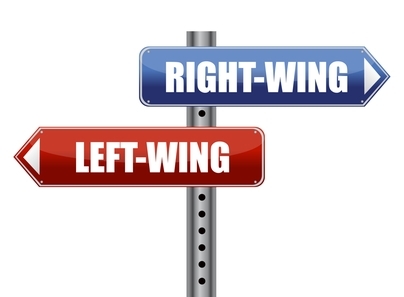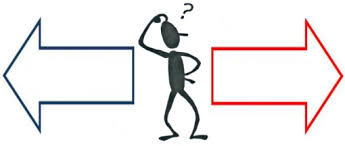Cuba’s Left and Right: Discourse and Fact
Por Pedro Campos

HAVANA TIMES — The Left and the Right first emerged as concepts during the voting process organized by the National Constituent Assembly that took shape following the French Revolution of 1789, when delegates were discussing whether to include the right of the king to veto the laws approved by the budding Legislative Assembly in the new constitution.
The deputies in favor of this veto – of maintaining the absolute power of the monarch, in fact – sat to the right of the Assembly chair. Those against it, and, as such, in favor of the sovereignty of the Assembly vis-à-vis royal authority, sat to the left.
This is how these notions began to be associated to struggles in favor or against the civil and political rights of the majorities, for equality before the law, for democracy, for popular sovereignty or the centralization of power.
This is why the term “Right” has been used to describe dictatorial governments that have suppressed the rule of law, citizen rights, elections and democratic processes, democratic constitutions and parliaments and that have governed on the basis of imposed laws without popular approval.
In most developed and underdeveloped countries today, the distinction between Left and Right is more or less reveled by the stark social and economic differences between sectors of the population and by the degree of political control over the interests of big capital that minorities wield.
Anyone can apply these traditional criteria to Cuba’s situation to identify where the Left and Right are.
When we speak of the new Cuban Right that is in power today, thus, we are being faithful to the political notion born of the French Revolution, for, ultimately, what makes one left or right-wing isn’t what one says but one’s position with respect to the political and civil rights of the majorities and to popular sovereignty.
From my point of view, the differences tend to become fuzzy in our country owing to the revolutionary and anti-imperialist discourse of those in power and the fact that the current constitution was approved by a broad majority of the people. But one should not forget that was nearly 40 years ago and under different national and international conditions.
The practical application of this constitution, what’s more, has resulted in the concentration of political and economic power in a traditional elite without succession and resistant to truly democratic changes within Cuba’s political system.
If we move past the ready-made phrases and methods of those in power, when we apply those political concepts to Cuban reality today, we find the Left in those who struggle in favor of the decentralization, democratization and socialization of political and economic power, those who demand respect for the political, civil, economic and social rights of all Cubans.
In short, we find it in those calling for changes that will favor the majorities that have been marginalized or whose involvement in the country’s politics or economic decisions has been curtailed owing to the degree that these have been centralized and monopolized.
In the political terms inherited from the French Revolution, the Right in today’s Cuba would be clearly represented by those who cling to the political and economic power that has been centralized and monopolized by the elite that considers itself the sole heir of the popular and democratic revolution of 1959.
It is represented by a minority that excludes the vast majority of the Cuban people from decisions in the name of “socialism”, a form of “socialism” that has really only concealed the State monopoly capitalism maintained by this elite, and which has used the term “Marxism-Leninism” to disguise its neo-Stalinist policies.
If we add to this the neo-liberal-styled economic policies applied by the government recently, such as the closing down of companies and factories, the downsizing that has cost thousands of people their jobs, its incentives for wage exploitation by private businesses and the generous opening of the country to international capital (on which it lays all hopes of overcoming the crisis), measures that marginalize and limit the development of the productive forces of Cubans, then there can no longer be any doubts about this.
Though it may strike some as paradoxical, I find that the groups which the “socialist” government calls “counterrevolutionaries at the service of imperialism” are defending left-wing positions, such as the civil and political rights of the dispossessed and exploited majorities.
In order to avoid confusion, however, we would have to speak of those in power as a new Cuban Right, so as to differentiate it from the old Right that was deprived of its control of the nation by the political revolution of 1959, a Right that has since been based in the United States, a Right that also did not represent or defend – and does not represent or defend – the interests of the majorities who have been denied political and economic power, and that is merely interested in recovering it for itself.
When we speak of the new Cuban Right that is in power today, thus, we are being faithful to the political notion born of the French Revolution, for, ultimately, what makes one left or right-wing isn’t what one says but one’s position with respect to the political and civil rights of the majorities and to popular sovereignty.
In Cuba today, diverse left-wing forces, including anarchists, socialists of different schools and even democrats and liberals, demand the democratization of political and economic power and the elimination of monopolistic State controls over the economy, such that the human, civil, political, economic, social and cultural rights of all Cubans are respected and “non-State” forms of production (as the State centralists call them) can flourish.
This is, at base, a revolutionary language that does not require the “left-wing” phraseology of the new Right in power, a Right which, beyond the camouflage, identifies with the elite that decides everything and monopolizes political and economic power, unwilling to share it with the majorities.
Though it may strike some as paradoxical, I find that the groups which the “socialist” government calls “counterrevolutionaries at the service of imperialism” are defending left-wing positions, such as the civil and political rights of the dispossessed and exploited majorities.

Y, aunque parezca paradójico, encontramos defendiendo posiciones de izquierda, como son los derechos civiles y políticos de las mayorías desposeídas y explotadas, a grupos que el gobierno “socialista” califica de “contrarrevolucionarios al servicio del imperialismo”.
Such are the dialectics of history, of the class struggle that is unleashed when minority sectors grab power and try to exclude others, be it the majority or not.
To overcome these social contradictions without violent conflict, political and economic power must be shared by all citizens, who must decide, through referendums and regular electoral processes, the laws that are to apply to all, elect public officials democratically through direct and secret votes, approve and control participative budgets and directly manage their businesses, either individually or collectively – all of which must be clearly established by the law of laws, the constitution.
With a view to encouraging inclusive exchanges among all Cubans so as to get out of the current maze and find the way, this broad Cuban Left should put aside all differences and try and work together in peaceful and democratic projects and actions.
—–
[email protected]






Thanks very much for your comment. However no undemocratic and authoritarian government can be considered of the Left, even if its social policies appear to benefit large sectors of the population.
The international left long ago stopped being champions of decentralized power. Individual liberty scares the modern left.
The old political nomenclature of left and right wings misses much of the terrain with it’s single axis. Some political scientists have proposed a two axis paradigm.
The Left – Right axis refers to the economic system, with laissez-faire capitalism on the far right and Communist economics on the far Left. The vertical axis refers to the political system with Authoritarian at one end and Libertarian at the other. The result is a map with 4 quadrants.
With the two axis political compass in mind, one can see that Marxist/Socialist dictatorships like the USSR or Cuba sit in the Authoritarian Left quadrant. The kind of democratic socialism which Sr. Campos describes would sit in the Libertarian Left quadrant.
As Campos noted above, the economic reforms being introduced in Cuba today seem designed to move the country from the Authoritarian Left quadrant to the Authoritarian Right quadrant. As Raul Castro has specifically ruled out any political changes, the regime does not plan on any movement toward the politically Libertarian half of the map.
It is on this point where I note a disagreement with the article above where the author has described the reforms as “neo-liberal styled economic policies”. They are anything but that. Liberalism derives from the same root word as does Libertarian. Liberalism involved freeing up political and economic power, something which the reforms do not do. Political power remains concentrated in a small elite dominated by the military officer class. Economic power is increasingly concentrated into the hands of the military owned and directed corporations.
As a result, the reforms will have the effect of moving Cuba into the quadrant occupied by the infamous regimes of Mussolini, Franco, Salazar and Pinochet, all better known by the name Fascism.
Sr. Campos calls for the broad Cuban Left to put aside differences and work together. Fair enough. But I would suggest you broaden your reach to include the Cuban democratic right as well. The desire for freedom and democracy in Cuba will find allies outside of Cuba among the liberal democratic nations, but only if you broaden your message.
However, you should know the international Left remains hopelessly blinkered as to the reality of the Castro dictatorship. The international Left continues to support the Castro regime and actively works to undermine any Cuban dissident movement, whether of the Left or Right.
There is a typo in the first paragraph. The National Constituent Assembly of the French Revolution was formed in 1789, not 1879.
No amount of sofismo will make the US funded dissidents “left wing” only in the feverish mind of the counterrevolutionaries.